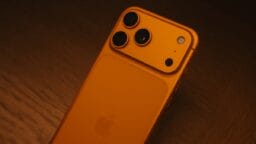Meta’s $800 Ray-Ban Display AR Glasses: Innovation Hampered by Repair Challenges
In a comprehensive evaluation of Meta’s latest $800 Ray-Ban Display AR glasses, iFixit unveiled both a remarkable optical advancement in the realm of consumer augmented reality and a disconcerting deficiency in repairability.
Foremost among potential wear-out points is the battery, which boasts a lifespan of approximately six hours under variable usage. Although the interior 960 mWh battery is nominally replaceable, Meta has neither released nor made available replacement options.
Accessing the battery necessitates prying apart the arms of the glasses, which are adhered with glue rather than affixed with clips or screws. This method presents considerable risks: intricate ribbon cables lie just beneath the surface, and reassembling the arms is essentially a game of chance.
Due to the adhesive, any attempt to infiltrate the battery compartment bears the potential for irreparable damage. iFixit cautions that a single misstep could sever critical internal connections.
The lens assembly emerges as the pièce de résistance. Deviating from conventional diffractive waveguides that manipulate light—frequently inducing rainbow effects or creating an “eye glow” detectable by bystanders—Meta’s glasses feature a geometric reflective waveguide that incorporates several coated glass layers and diminutive partially reflective mirrors.

This innovative design mitigates various artifacts often associated with older AR lenses. There is an absence of distracting light emanating toward onlookers, and the rainbow effect under artificial lighting is virtually nonexistent.
Meta most likely procures these waveguides from specialized manufacturers such as Schott and Lumus, known for their expertise in the geometric waveguide domain.
Nonetheless, this optical finesse is marred by a lack of repair feasibility. The lenses are affixed directly to the waveguide glass, rendering lens replacement an arduous, if not impossible, undertaking.
The hinges, concealed beneath adhesive and secured by minuscule T3 screws, necessitate the use of precision tools and substantial patience for disassembly.
The electronics present a similarly bleak outlook. Components like the speakers, battery, and sensors are soldered in place, eschewing modularity.
Consequently, the failure of a single component jeopardizes the entire system. iFixit remarked on the excessive application of adhesive relative to the IPX4 splash resistance rating.
Owing to the absence of design elements intended for disassembly or reassembly, these glasses are effectively rendered unrepairable for all but the most specialized laboratories.
iFixit concludes that while initial AR wearables are distinguished by their capabilities, they are constructed more for obsolescence than for reparability.
Source link: Iphoneincanada.ca.






